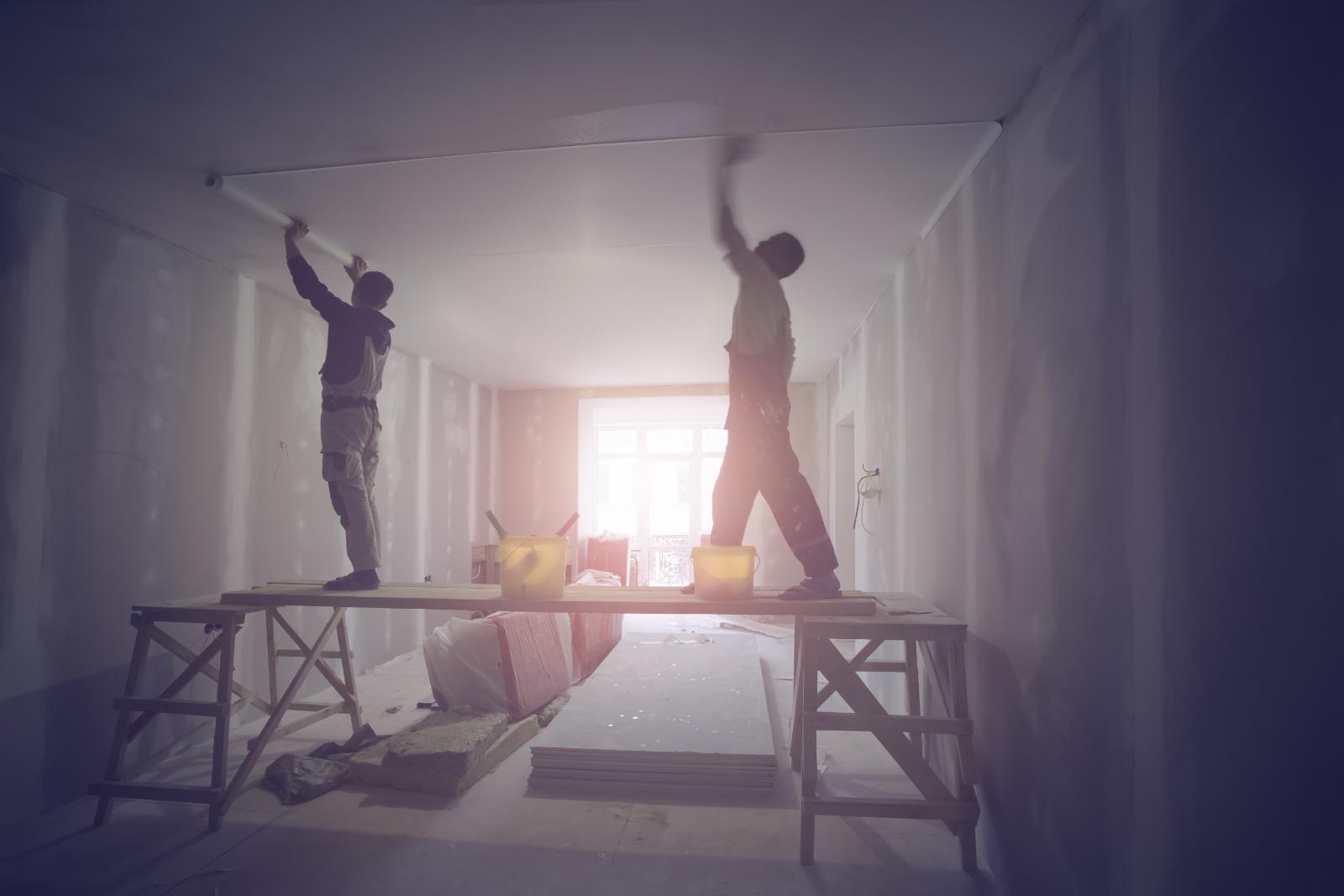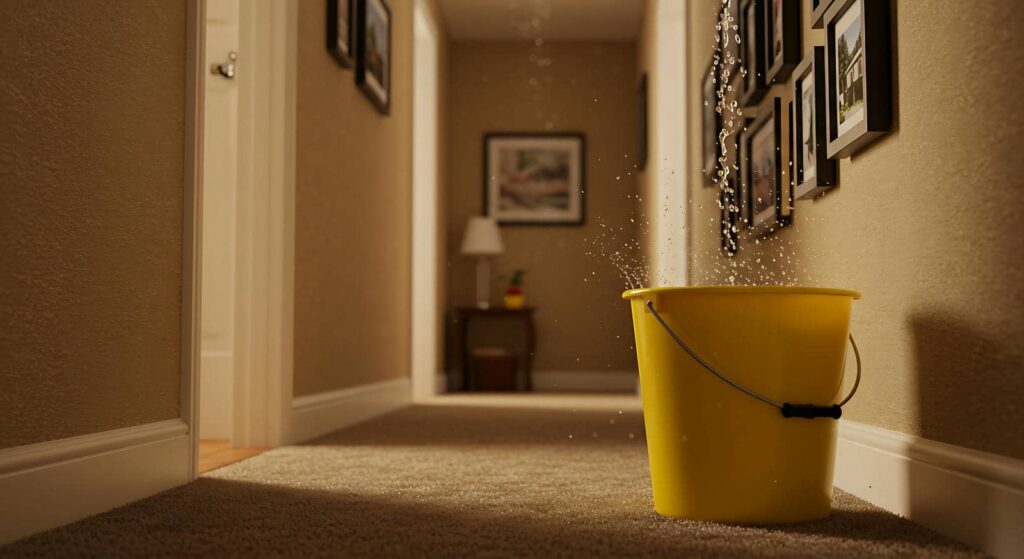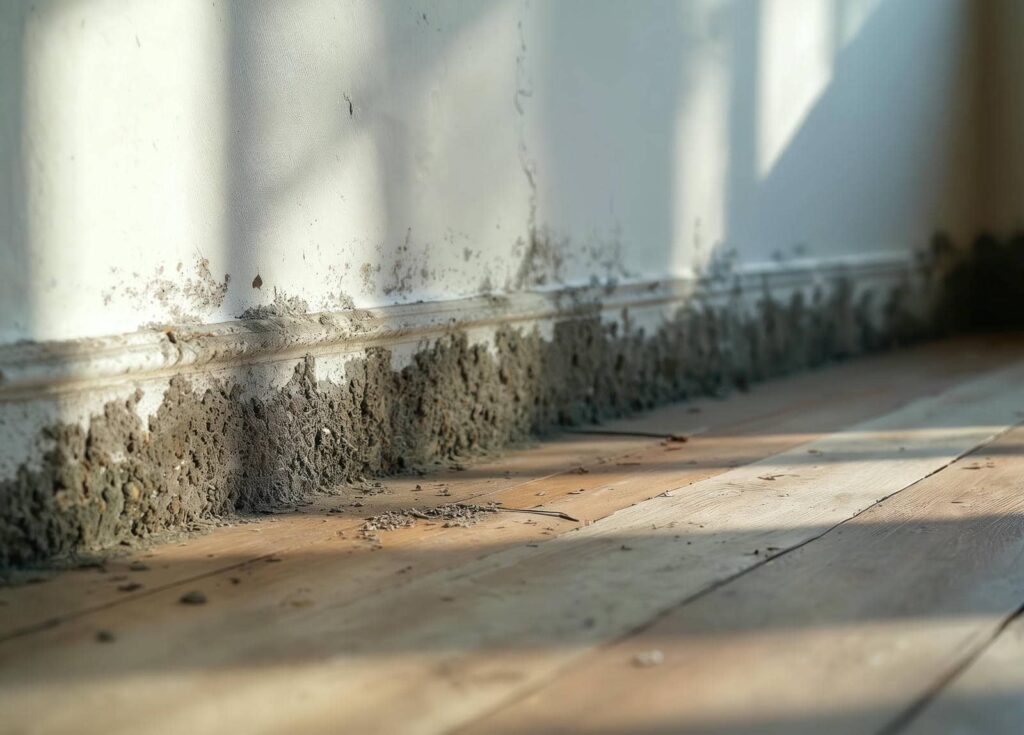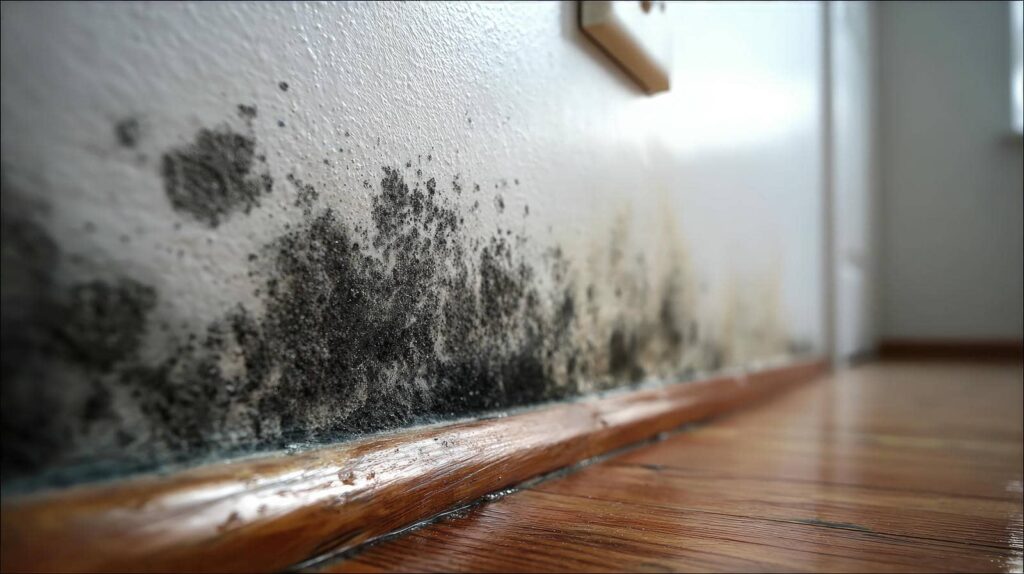Contents
You’ve just discovered a pesky hole in your drywall that needs fixing, and you’re unsure where to start. Don’t worry; with the right guidance, patching up that hole can be a straightforward task. By following these ten expert steps, you’ll be able to tackle the repair like a pro and restore your wall to its former glory. From measuring the hole size to applying the final coat of paint, each step plays an essential role in achieving a flawless finish. So, grab your tools and get ready to transform that eyesore into a polished surface.
Key Takeaways
- Measure the hole accurately, choose filler, and clear debris.
- Gather tools: putty knife, sandpaper, joint compound.
- Cut patch material to size, apply generously, and feather edges.
- Prime for adhesion, use quality paint and allow drying time.
- Smooth imperfections, sand for finish, and clean up thoroughly.
Assessing the Hole Size
When evaluating the hole size in your drywall, start by measuring the diameter using a tape measure for accuracy. To get an exact measurement, place the tape measure across the widest part of the hole. It’s important to measure the hole accurately to make sure the right amount of filler is used for the patching process.
After measuring the hole, the next step is choosing the appropriate filler. For small holes like nail pops or minor dents, spackling paste is a good choice. Spackling paste is easy to apply, dries quickly, and is sandable for a smooth finish.
For larger holes, joint compound or drywall mud is recommended. These filters are more substantial and better suited for bigger repairs. Remember to check the label of the filler to ensure it’s compatible with your drywall type.
Measuring the hole accurately and selecting the right filler are essential steps in successfully patching drywall. By taking the time to measure precisely and picking the appropriate filler, you set yourself up for a professional-looking finish.
These initial steps lay the foundation for a professional-looking finish that will blend in seamlessly with the rest of your wall.
Gathering Materials and Tools
To start the process of patching drywall holes, make sure you have all the necessary materials and tools ready for the task. Tool organization is crucial to a successful repair job. Begin by gathering the essentials: a putty knife, sandpaper, joint compound, a drywall patch, a utility knife, and a paintbrush. These tools can typically be found at your local hardware store or home improvement center.
Consider purchasing a drywall patch kit if you’re looking for budget-friendly options. These kits often contain everything you need to repair small to medium-sized holes, making it a convenient and cost-effective choice. Additionally, investing in a good quality putty knife and sandpaper will guarantee smoother results and can be reused for future projects.
When organizing your tools, designate a specific area or toolbox to keep them together. This practice not only helps you locate items quickly but also prevents the loss of tools over time.
It’s also beneficial to clean and store your tools properly after each use to maintain their longevity.
Preparing the Hole Area
Before you begin patching the drywall hole, clear debris from the area using a putty knife or sandpaper to create a smooth surface.
Make sure you have all the necessary materials such as spackle, sandpaper, and a putty knife within reach for a smooth repair process.
Taking the time to properly prepare the hole area will set the foundation for a successful patching job.
Clear Debris From Hole
Clearing debris from the hole is an essential first step in preparing the area for patching drywall. Before beginning the repair process, make sure the hole is clean and free of any loose particles, old drywall, or dust.
Use a putty knife to scrape away any loose debris within the hole and around its edges. This step is vital as it allows the filler material to adhere properly to the drywall surface and guarantees a smooth finish once the patch is complete.
After removing the debris, inspect the edges of the hole. If there are any rough or uneven areas, gently sand them down using fine-grit sandpaper. This will help create a smooth progression between the patch and the existing drywall, resulting in a professional-looking repair.
Gather Necessary Materials
Gather the necessary materials for preparing the area around the hole before proceeding with the drywall patching process. To guarantee a successful repair, it’s vital to have the right items at hand. Here’s what you’ll need:
Material selection:
Choose a high-quality joint compound that matches the existing wall texture. Opt for a drywall patch kit or individual pieces of drywall if the hole is substantial. Sandpaper with varying grits will also be essential for achieving a smooth finish.Proper tools:
Obtain a putty knife for applying the joint compound, a drywall saw or utility knife for cutting and shaping the patch, and a taping knife for feathering the edges. A drywall sanding block or sanding pole will help you blend the patch seamlessly with the surrounding wall. Additionally, have a damp cloth or sponge ready for cleaning up excess compounds.
Cutting the Patch Material
Measure and mark the patch material according to the size of the hole on the drywall surface. Ensuring you measure accurately is crucial for a smooth repair. Use a measuring tape to determine the dimensions of the hole precisely. Once measured, transfer these dimensions onto the patch material, whether it’s a spare piece of drywall or a patch kit.
Next, it’s time to cut the patch material. Use a utility knife or a drywall saw to carefully cut along the marked lines. Make sure to apply firm and even pressure to create clean edges. A sharp blade is essential for a precise cut. Take your time during this step to avoid any unnecessary mistakes.
After cutting the patch material to size, gently sand the edges using fine-grit sandpaper. This sanding technique helps to smoothen any rough or uneven edges, ensuring a better fit when the patch is placed over the hole. Be cautious not to oversand, as this may lead to the patch material being too small for the hole.
Applying Joint Compound
To achieve a smooth and uninterrupted finish, apply joint compound generously over the edges of the hole before placing the patch material. This step is vital in guaranteeing a flawless integration of the patch into the existing drywall.
Here are some essential tips for applying joint compounds effectively:
Generous Application: Use a putty knife to spread the joint compound evenly over the edges of the hole, extending slightly beyond the perimeter. This generous application helps blend the patch with the surrounding wall seamlessly.
Feathering Technique: When applying the joint compound, feather the edges by spreading the compound outward in a thin layer. This technique helps create a gradual shift between the patch and the wall, minimizing the visibility of the repair.
Drying Time: Allow sufficient drying time for the joint compound as per the manufacturer’s instructions before proceeding to the next step. Typically, a joint compound needs at least 24 hours to dry completely. Ensure the area is well-ventilated to aid the drying process.
Sanding the Patch
Once the joint compound has dried adequately, proceed to sand the patch to achieve a smooth and continuous finish. Sanding is an important step in the drywall repair process as it helps blend the patch with the surrounding wall smoothly. To begin, use a fine-grit sandpaper or sanding sponge to gently sand the patched area. Employ circular motions and light pressure to avoid damaging the surface. Focus on feathering the edges of the patch to create a polished connection between the patch and the wall.
When sanding, periodically run your hand over the patched area to feel for any unevenness. This tactile approach can help you identify areas that need additional sanding. Once you achieve a level surface, wipe the area clean with a damp cloth to remove any dust or particles.
For finishing touches, consider using a damp sponge to further smooth out the sanded area and guarantee a flawless surface. After completing the sanding process, it’s important to thoroughly remove all dust to prepare the patch for priming and painting. Use a vacuum with a brush attachment or a dry cloth to clean up any remaining dust particles.
A clean work area will result in a professional-looking repair job.
Priming the Patch
Now that you’ve successfully sanded the patch, it’s time to shift your focus to priming.
Priming is an essential step in the patching process as it helps seal the repair and ensures a smooth finish.
Understanding the types of primers available and mastering proper application techniques will secure a professional-looking result.
Importance of Priming
Priming the patch before painting is essential for achieving a smooth and uniform finish on your drywall repair job. When it comes to the importance of priming, there are several key reasons why this step shouldn’t be overlooked:
Surface Preparation:
Priming helps create a uniform surface by sealing the patch and the surrounding drywall. This guarantees that the paint will adhere evenly and prevent blotchiness or uneven color absorption.Paint Adhesion:
By applying a primer, you’re creating a surface that allows the paint to adhere better, leading to a more durable and long-lasting finish. This step is vital for preventing peeling or flaking of the paint over time.Sealing, Finishing Touch:
Priming not only helps with paint adhesion but also seals the repaired area, providing a smooth and consistent base for your paint to go on. It acts as the final touch that enhances the overall appearance of your drywall repair.
Types of Primers
When considering priming the patch on your drywall repair job, it’s important to understand the different types of primers available for achieving the best results. Primer selection plays a vital role in preparing the patched area for paint, guaranteeing a smooth and long-lasting finish.
There are various types of primers to choose from, including oil-based primers, which are great for blocking stains and promoting adhesion; water-based primers, known for their quick drying time and easy cleanup; and shellac-based primers, ideal for sealing odors and stains. Each type of primer offers unique benefits, so selecting the right one for your specific patching needs is essential.
For the best results, follow the manufacturer’s instructions for application. Ensure the primer is applied evenly and allow it to dry completely before proceeding with painting.
Primer drying time can vary depending on the type of primer used, so be patient and allow sufficient time for it to cure before adding paint layers. Remember, proper primer application sets the foundation for a flawless finish on your drywall repair project.
Application Techniques
For achieving the best results in priming the patch on your drywall repair job, it’s crucial to master the application techniques to secure a smooth and long-lasting finish. When it comes to priming your drywall patch, follow these essential tips:
Utilize Proper Painting Techniques:
Use a high-quality paint roller to apply the primer evenly over the patched area. Start from the center and work your way outwards to blend the primer seamlessly with the surrounding wall.Master Sanding Tips:
Before priming, make sure the patched area is completely dry and use fine-grit sandpaper to smooth out any imperfections. Lightly sand the edges of the patch to create a smooth connection between the patch and the wall.Embrace Application Tricks:
Apply the primer in thin, even coats to prevent drips or uneven coverage. Allow each coat to dry completely before applying the next layer for the best adhesion and a professional finish.
Painting the Patch
To ensure a smooth finish, apply a coat of high-quality paint to the patched area, using a smooth and even motion. When selecting a color for your patch, make sure it matches the existing wall color to create a cohesive blend. Opt for paint specifically designed for interior walls to achieve the best results. High-quality paint provides better coverage and a more durable finish that will last longer without fading or chipping.
Before starting the painting process, allow ample time for the patching compound to dry completely. Typically, waiting at least 24 hours before painting over the patched area is recommended. This ensures that the paint adheres well and prevents any potential cracking or peeling in the future. Once the patch is dry, use a paintbrush or roller to apply the paint evenly over the repaired section.
When painting the patch, consider using the same finishing techniques as used on the rest of the wall to maintain consistency in texture and sheen. Blend the edges of the patch with the surrounding wall by feathering the paint outwards. Apply multiple thin coats rather than one thick layer to achieve a professional-looking finish.
Finishing Touches and Cleanup
Smooth out any imperfections by gently sanding the patched area until it blends smoothly with the surrounding wall.
Make sure to thoroughly eliminate any dust and debris to guarantee a clean surface for painting.
Apply a fresh coat of paint to the patched area for a finished look that matches the rest of the wall.
Smooth Out Imperfections
Address any remaining imperfections by applying a thin layer of joint compound over the patched area, ensuring a smooth finish before proceeding with sanding and cleanup.
To achieve a flawless look, follow these steps:
Sand to Perfection: After the joint compound dries, use fine-grit sandpaper to gently sand the patched area. This step smooths out any uneven surfaces and blends the patch seamlessly into the surrounding wall. Remember to wipe away any dust with a damp cloth before moving on to the next step.
Evaluate Surface Smoothness: Run your hand over the patched area to check for any rough spots or bumps. If you detect any imperfections, apply another thin layer of joint compound, feathering the edges carefully to create a smooth connection between the patch and the wall.
Final Finishing Touches: Once satisfied with the smoothness of the patched area, you can proceed with painting. Choose a paint color that matches the existing wall for a cohesive finish. Apply the paint evenly over the patched area and allow it to dry completely before admiring your handiwork.
Dust and Debris Removal
Once the joint compound has dried and you have smoothed out the imperfections, the next step involves thoroughly removing any dust and debris from the patched area to prepare for the final finishing touches and cleanup. To guarantee a clean surface for painting or further finishing, employing the right cleaning technique and tools is vital. Here are some effective methods and tools to aid in dust and debris removal:
| Cleaning Technique | Tools Needed |
|---|---|
| A vacuum cleaner with brush attachment | A vacuum cleaner with a brush attachment |
| Tack Cloth | Tack cloth (sticky cloth for dust) |
| Damp Cloth | Damp microfiber cloth |
| Compressed Air | Compressed air can or air compressor |
| Soft Bristle Brush | Soft bristle brush or paintbrush |
To prevent dust from spreading and protect surrounding areas, consider using plastic drop cloths or painter’s tape to cover furniture, floors, and fixtures. Additionally, wearing a dust mask and safety goggles can safeguard against inhaling particles during the cleaning process. Prioritizing dust prevention and protection will result in a cleaner work environment and a smoother finish for your patched drywall.
Paint for Finishing
Prepare for the final stages of patching drywall by selecting the appropriate paint color and finish to achieve a smooth blend with the surrounding wall surface. When it comes to finishing touches, the right paint can make all the difference in seamlessly covering the repaired area.
Here’s what you need to keep in mind:
Paint Color Options: Choose a paint color that matches the existing wall color. If you’re unsure, take a small sample of the wall to a hardware store for color matching. It’s crucial to make sure the patch blends seamlessly with the rest of the wall.
Painting Techniques: Use a high-quality paintbrush or roller for a smooth finish. Start by applying a primer to the patched area to help the paint adhere better. Then, apply the paint in thin, even coats, allowing each coat to dry completely before adding another layer. This technique helps avoid visible brush marks or uneven coverage.
Finishing Touches: Once the paint has dried, inspect the area for any imperfections or color discrepancies. Touch up as needed to achieve a flawless finish that integrates seamlessly with the rest of the wall.
Maintenance Tips
To safeguard the longevity of your patched drywall holes, regularly inspect for any signs of damage or wear and address them promptly. By implementing proper maintenance techniques, you can secure that your repaired drywall remains in top condition for years to come.
One effective strategy for preventing future holes is to be mindful of furniture placement in your home. Avoid bumping or knocking items against the walls to prevent unnecessary damage. Additionally, establishing a maintenance schedule can help you stay on top of any small issues before they escalate into larger problems.
Incorporating regular touch-ups using the appropriate repair techniques can also help maintain the integrity of your patched drywall. Keep a small supply of patching materials on hand so that you can quickly address any minor imperfections that may arise.
If you notice any significant damage or are unsure about how to proceed with repairs, don’t hesitate to seek professional help. A professional can guide the best course of action to take in more complex situations.
Wrap-Up
Now that you have patched those drywall holes, your walls look as good as new. Remember to stay on top of maintenance to keep your walls in top shape.
By following these ten steps, you can tackle any hole with confidence.
So go ahead and show off those flawless walls to your friends and family – they’ll be amazed at your handy skills!




